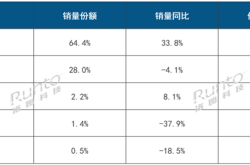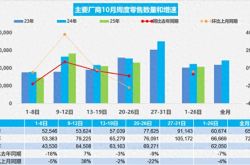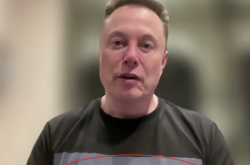vivo Unveils X Fold 5, Signaling the Foldable Era Apple Users Have Long Awaited
![]() 06/27 2025
06/27 2025
![]() 648
648
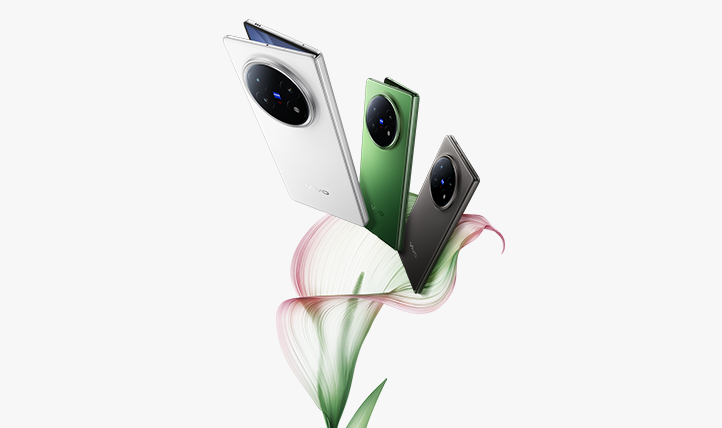
Since the dawn of 2025, a notable trend in the smartphone industry has emerged: mainstream manufacturers have increasingly focused on lightweight physical designs as a technological breakthrough.
This strategic shift stems from the long-term technological limitations faced by conventional flagship smartphones. Take the imaging system, for instance, from multi-camera coordination, one-inch large sensors, to computational photography algorithms, the space for hardware stacking and software tuning has approached the theoretical limit of the phone's physical structure. When internal competition based on performance parameters fails to trigger a qualitative improvement in user experience, structural design and ecosystem collaboration become pivotal in breaking the stalemate.
With the rapid integration of business offices, mobile entertainment, and light productivity scenarios, the foldable category is transitioning from a 'niche tech luxury' to a 'mass efficiency tool'. Third-party research indicates that consumer awareness of foldable screens has surged from 30% in 2021 to 78% in 2025.
Market data supports this shift: In 2024, global foldable shipments reached approximately 9.17 million units, marking a 30.8% year-on-year growth; in the first quarter of 2025, China's foldable market shipments hit 2.84 million units, an increase of 53.1% year-on-year.
Amidst this prosperity, challenges persist. To breach the critical point of market penetration (3.2% penetration rate in China in the first three quarters of 2024), the industry urgently needs to address the core question: why do users need foldable screens? Where lies its irreplaceable value?
On June 25, vivo presented its answer with the X Fold5: transforming hardware parameters into scenario solutions through ecosystem interconnection. As emphasized by Huang Tao, vivo's vice president of products, while continuing the series' 'lightweight' (217 grams, the lightest large foldable globally) and 'robust' (three-proof + telephoto + battery life) attributes, vivo enables users to 'make no compromising choices'.
Particularly noteworthy is its deep interconnection with Apple Watch (synchronous calls/health data), AirPods (spatial audio adaptation), and Mac (extended screen/file interoperability), and even the provision of emergency hotspots and reverse charging for iPhones. This open interconnection strategy directly tackles users' pain points related to cross-system collaboration.
Beyond the machine parameters, the significance of vivo X Fold 5 for the industry lies in highlighting that the next battleground for foldable screens is scenario reconstruction and ecosystem compatibility, which better defines the category's future than simply refreshing weight records.
01. Pragmatists Facing Trade-offs
From a broader market perspective, the smartphone market has fallen into a 'micro-growth trap', with IDC's latest forecast revising the 2025 growth rate down to 0.6%. Conversely, the foldable category is experiencing inverse growth. According to iiMedia Consulting data, shipments of domestically produced foldables in China have soared from 500,000 units in 2020 to 8.59 million units in 2024, and are projected to exceed 14.9 million units in 2025.
This divergence underscores a reality: in a saturated market with over 80% penetration, only a morphological revolution can reignite demand for phone replacements.
However, morphological innovation often comes with physical constraints. Foldable phones must balance the fragility of flexible screens, hinge mechanical structures, and battery capacity within limited space, leading to early products typically exceeding 300 grams and sacrificing portability for functional completeness.
When the vivo X Fold series debuted in 2022, its greatest value wasn't just its 260g weight, below the industry average, but that it validated precision engineering for weight reduction as a viable path. By X Fold3, the phone's weight had dropped to 219g, and the newly launched X Fold5 has set a new global lightweight record at 217g, shaving off 2 grams and 2 millimeters in thickness compared to its predecessor.

Earlier this year, a smartphone manufacturer publicly declared that lightweight was the industry's keyword for the year, but 'light' is merely a superficial label for user value.
If 'light' is the password for vivo X Fold5 to capture users' attention, the conceptual construction of 'robust' embodies vivo's philosophy on foldable screens, namely, foldable screens must evolve from 'not daring to use' to 'freely using'.
The real battlefield for foldable screens lies in reliability. vivo X Fold5 is currently the only foldable model equipped with 'three-proof' capabilities, featuring IPX9+ water resistance, IP5X dust resistance, and the ability to make calls for 20 hours, navigate for nearly 10 hours, and record videos for over 4 hours in -20°C environments. Whether users are exploring outdoors or in extreme weather, foldable screens can transform from 'cautiously used tech luxury' to 'all-weather productivity tools'.
The coordinated evolution of screens and battery life further enhances the user experience. Both the inner and outer screens employ 8T LTPO OLED, addressing strong light and flicker issues with a peak brightness of 4500 nits and full-brightness high-frequency PWM dimming (TÜV Global Eye Care 3.0 certification), while Zeiss Natural Color 2.0 ensures a color difference ΔE<0.8 between the two screens.
More crucially, a 6000mAh second-generation semi-solid battery (up from Fold3 Pro's 5700mAh) is packed into the 217-gram body, increasing energy density by 7.2%. This means users no longer have to choose between a 'lightweight feel' and 'battery anxiety'; the charging configuration offers a combination of 90W wired and 30W wireless fast charging, and the cross-ecosystem reverse charging function turns the phone into a 'mobile power station' extending other devices' life, catering to outdoor users' and mobile workers' 'power anxiety'.
Of course, market skepticism exists, such as the use of the previous generation's Snapdragon 8 Gen3 chip. However, from 'New Position's' perspective, this performance configuration choice also reflects vivo's 'integrity' to some extent. Instead of blindly pursuing the new Snapdragon 8 Elite, vivo opted for the Snapdragon 8 Gen3 partly because current mainstream mobile phone chips generally have excess performance. The actual measured Geekbench multi-core score is 6913, inferior to top-tier conventional flagships but sufficient for all daily functional needs.
Moreover, under the foldable's heat dissipation-limited architecture, this solution achieves an energy efficiency balance. This trade-off also confirms the unique logic of foldable phones' special form factor for chip adaptation - peak performance gives way to sustained stability.
The most intuitive result is reflected in the price, with a starting price of RMB 6,999, significantly lower than competitors, satisfying more users' 'taste' for flagship foldable models.
02. Lightweight: A Means, Not an End
While vivo X Fold5's 217-gram global lightest record has become its most prominent label, vivo's underlying logic points to a deeper proposition: lightweight is merely the physical carrier for experience reconstruction, not the ultimate goal.
According to supply chain sources, vivo X Fold5 could have aggressively reduced battery capacity to achieve an 8.8-millimeter thickness (0.7 millimeters thinner than the current version), but it ultimately chose to retain the 6000mAh battery. This decision underscores vivo's product philosophy: technical indicators must yield to the integrity of user experience scenarios.
Historical experience shows that the core audience for ultra-thin models focuses on two groups: design-conscious users pursuing fashion and portability (such as female users, accounting for 63% of small foldable sales), and business professionals needing spare phones (IDC data shows that 34% of executives have dual phones). However, X Fold5 aims to transcend these limitations, aspiring to become the central device for mobile productivity.
The breakthrough of Atomic Workbench lies in reconstructing the multi-tasking logic of Android. Unlike the fragmented experience of traditional split-screen, it supports dynamic co-screen operation of up to 5 applications, with WeChat meetings, WPS editing, Bilibili downtime activities, email sending and receiving, and stock monitoring running simultaneously. Each window responds independently to touch input, and data is linked in real-time.
In terms of data flow, 'Atomic Workbench' also supports direct drag-and-drop of files between applications; 'Mac Personal File Station' enables remote control and file operation of mobile phones across platforms (Win/Mac). 'Keyboard and Mouse Collaboration' instantly transforms the phone into an extended screen for Mac, making the two screens 'one': the same set of keyboard and mouse can seamlessly control, transfer files, and copy and paste across devices.
This design is essentially an evolution of Apple's 'Stage Manager', not only enabling multi-window parallelism but also bridging the ecosystem gap between Android and macOS.
While other Android manufacturers are obsessed with replicating closed ecosystems, X Fold5 cuts into the market with the positioning of 'Apple's best partner'. Data revealed by Huang Tao on Weibo is quite persuasive: 42% of X Fold3 series users have iPhones as their primary devices. What this group of high-net-worth users needs is not an Apple replacement but a collaborative partner that compensates for ecological shortcomings.
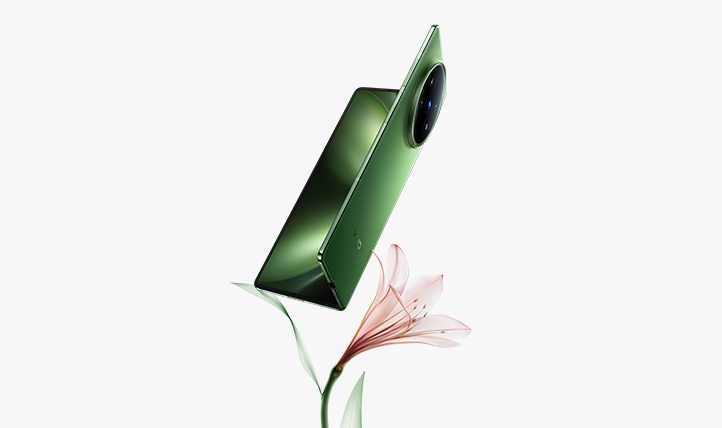
Most people overlook a crucial fact: in the current high-end market where the replacement cycle has extended to 36 months, the cost of forcing users to replace an entire ecosystem of devices far exceeds the product's value itself. vivo's 'ecological symbiosis' strategy essentially respects users' sunk costs.
Among other things, the deep interconnection with Apple Watch breaks through the shackles of Android phones being unable to read Apple health data, with core indicators such as activity rings and heart rate variability (HRV) synchronized in real-time, and even enabling answering watch calls on the Android side (requires downloading 'vivo Health Interconnection', a necessary compromise at present); another industry first is the iCloud direct cloud access function, allowing users to directly access iCloud documents/photos/notes without exporting, with cloud file delayed loading controlled within 1.2 seconds.
vivo X Fold5 even provides an 'extended life' function for iPhone users. Even when its battery is down to 5%, it can provide emergency power support for iPhones. It not only enables convenient hotspots for iPhones in areas with weak signals, such as subways and underground garages, to solve network issues but also functions as a reverse charger when the iPhone's battery is running low.
These functions may seem to serve Apple users but actually build a unique competitive barrier. While Huawei's foldable phones cannot use GMS due to sanctions and Samsung is insufficiently localized in China, vivo has addressed the most painful point for high-end users: the fragmentation of cross-ecosystem data.
At this stage, this is the most pragmatic path for the Android camp to break through high-end barriers. Rather than confronting Apple within a closed ecosystem, it is more beneficial to become a value-added provider of open interconnection.
03. Final Thoughts
Foldable smartphones have undoubtedly entered their 'morphological dividend period'. From the upward market data trend to leading manufacturers' continuous investment, it's evident that this is not a fleeting category. However, when viewed in the broader context of mobile phone evolution, a pressing question arises: is the depth and breadth of this 'folding'-triggered morphological revolution comparable to the astonishing leap from feature phones to smartphones?
The answer may not be entirely optimistic. The end of the feature phone era essentially marked the transition from a communication tool to a mobile computing platform. Touch interaction, open operating systems, and the explosive growth of application ecosystems completely restructured the relationship between devices and humans.
The current foldable wave still largely stays at the level of physical form efficiency optimization: lighter, thinner, and more reliable, addressing the problem from 'usable' to 'easy to use'. Of course, this is not to diminish the hard work of technological progress but to point out a reality: current foldable innovation is more like an 'experience enhancement patch' in the smartphone maturity stage.
However, vivo X Fold5's ability to strike a balance between lightweight and versatility, closed and open, is undoubtedly an excellent response under current industrial conditions. It refines 'lightweight' to the extreme, challenges reliability boundaries with 'three-proof', and cracks the user migration barrier with 'cross-ecosystem compatibility'. Each step precisely addresses user experience pain points. This is a pragmatic and clever business strategy, especially in a fiercely competitive market.
*The title image and images in the text are sourced from the internet.

